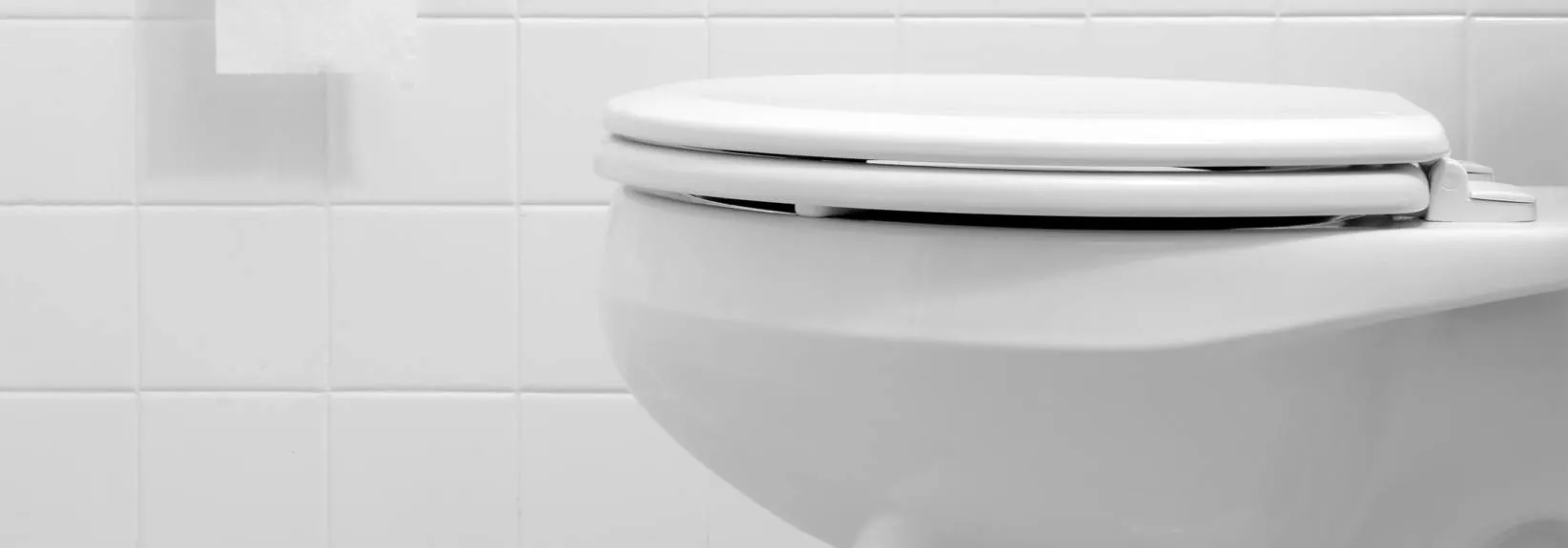Why Is My Toilet Leaking at the Base?
Do you spy water puddled at the base of the toilet? Don’t put your head in the sand. Left unaddressed, your toilet will continue leaking a little bit with each flush, allowing toilet water to pool on the bathroom floor and potentially causing potentially dangerous mold damage and rot in the subfloor.
A toilet leaking at the base often points to a faulty wax ring. This component should make a tight seal between the toilet base and the drainpipe. When it fails, water may seep out every time you flush. Fortunately, it’s not difficult to find the source of the leak and troubleshoot the problem. If you decide the wax ring needs to be replaced, we suggest calling a plumber for professional toilet repair.
Test Your Leaky Toilet
At times, a nearby leak can make the toilet look like it is leaking at the base. Follow these steps to find out precisely where the water is coming from.Check for Condensation
The “leak” around your toilet could not be a leak at all. It’s possible, water vapor may be condensing on the bowl or tank and dripping onto the floor. To check for this, wipe up any standing water with a paper towel and flush the toilet. Look carefully —if no additional water pools around the base, condensation is the likely culprit. Running the exhaust fan when you shower is an easy fix.Examine the Toilet Tank
Feel around the surface of the tank for any wetness. To rule out condensation, clean up any droplets with a dry washcloth. Then, examine it again, checking for loose bolts or cracked porcelain leaking water onto the floor. Tighten any loose bolts you see. If the tank is broken, you’ll need to replace your toilet.Inspect the Water Hose
Check the cold-water supply line behind the toilet. A loose connection, defective hose or worn out shut-off valve could cause a leak. If tightening the fittings doesn’t resolve the issue, you may need a plumber to replace the water supply hose.Tighten the Tee Bolts
If these troubleshooting tips don’t help, your toilet is probably leaking at the base like you thought. Before calling a plumber, try tightening the tee bolts that attach the toilet to the floor. You may need to remove the decorative plastic caps with a putty knife or flathead screwdriver to reach the bolt underneath. Be careful not to over-tighten, as this could break the porcelain. If the bolts spin freely, you could need to get new ones.Look for Signs of a Worn-Out Wax Ring
If bolting the toilet tighter to the floor doesn’t fix the problem, a damaged wax ring could be the problem after all. Besides water soaking the floor around the toilet, you may notice a sewage odor, indicating a broken sewer line seal. And if the toilet wobbles, this might mean it’s sitting on a broken flange, the part that connects the flush system to the plumbing line. A rocking toilet might also indicate a soft subfloor resulting from the leak, which demands immediate attention to prevent the problem from causing more problems. Hire a Plumber to Replace the Wax Ring If you determine that a broken wax ring is indeed the problem, resolving it requires removing the toilet, replacing the ring and reinstalling the toilet. While it’s possible to complete the repair without a plumbing license, DIY toilet removal is not recommended. Here’s why you should leave the task to a certified plumber:-
- Porcelain is an unforgiving material. If you bang the toilet on the floor or hit it too hard with a plumbing tool, it could crack, forcing you to pay for a toilet replacement in addition to everything else.
-
- Lifting and lowering the large plumbing fixture is a two-person job. Even then, poor lifting techniques could leave you with an hurt back.
-
- Checking for water-damaged subflooring requires a trained eye. And if any damage has happened, it should be addressed before reinstalling the toilet, something a plumber can help guide you through.
-
- If you detect that the entire flange below the toilet is damaged, it will need to be replaced. This is even more challenging than swapping out the wax ring.
-
- Removing the toilet, making the necessary change and reinstalling it can take a few hours, if not longer. You doubtlessly have better ways to spend your time, giving you yet another reason to leave the task to a plumber.

